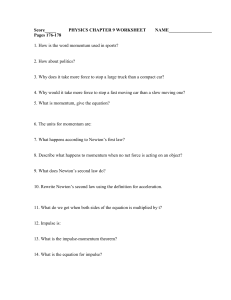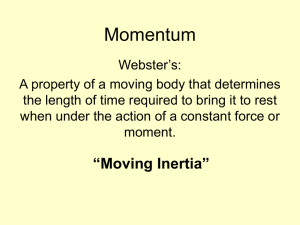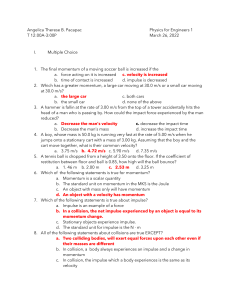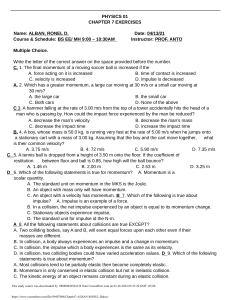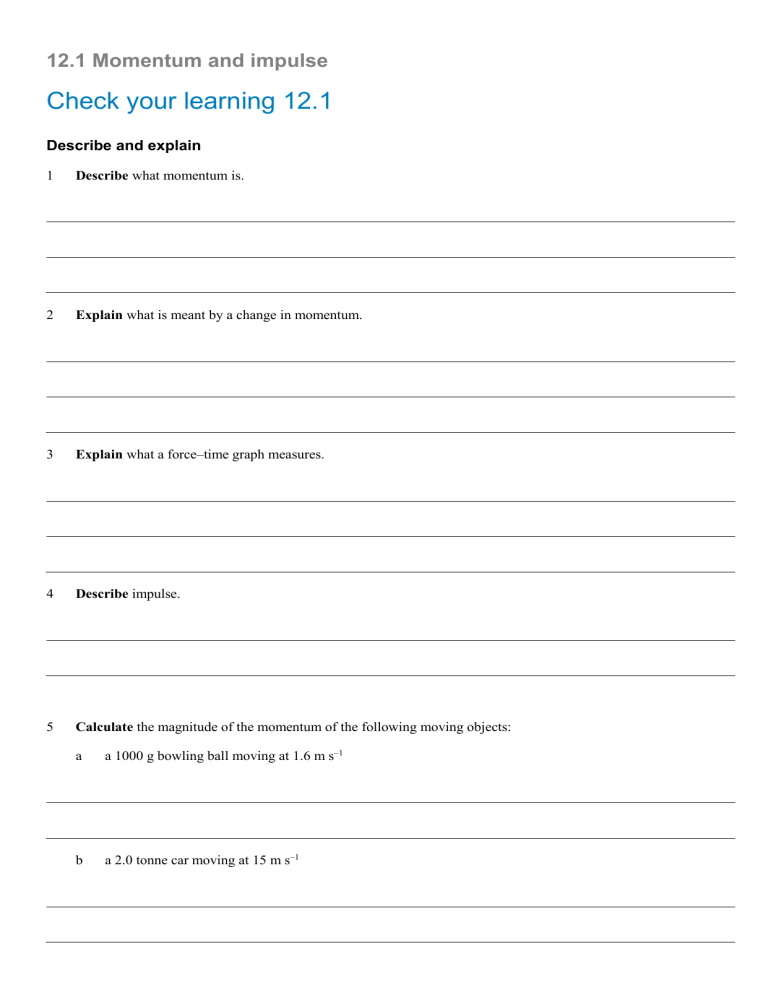
12.1 Momentum and impulse Check your learning 12.1 Describe and explain 1 Describe what momentum is. 2 Explain what is meant by a change in momentum. 3 Explain what a force–time graph measures. 4 Describe impulse. 5 Calculate the magnitude of the momentum of the following moving objects: a a 1000 g bowling ball moving at 1.6 m s–1 b a 2.0 tonne car moving at 15 m s–1 c Earth in its journey around the Sun. (Earth’s mass is 6 × 1024 kg and its average radius of orbit is 1.5 × 1011 m) 6 A 900 kg car is travelling east at a velocity of 40 km h−1 when it is approached by a 290 kg motorbike travelling west at a velocity of 90 km h−1. Calculate the total momentum of the system. 7 A proton of mass 1.67 × 10–27 kg is accelerated from 2 × 104 m s–1 to 9 × 105 m s–1. Calculate the change in momentum. Apply, analyse and interpret 8 A force of 3 millinewton acts on an electron for 0.15 seconds. Determine the impulse imparted on the electron. 9 A mass of 2.4 kg is moving at 6.0 m s–1 north. a Determine how long, and in what direction, a frictional force of 5.6 N must act to bring it to rest. b 10 Calculate the impulse acting on the object. A tennis ball is struck by a racquet as shown by the graph (Figure 4). FIGURE 4 Force-time graph Determine the: 11 a impulse given to the ball b change in momentum of the ball. Consider Figure 5 which shows a force–time graph for an object over 10 s. FIGURE 5 Force-time graph a Calculate the impulse imparted to the object over the whole 10 seconds. b Determine the greatest impulse given.

